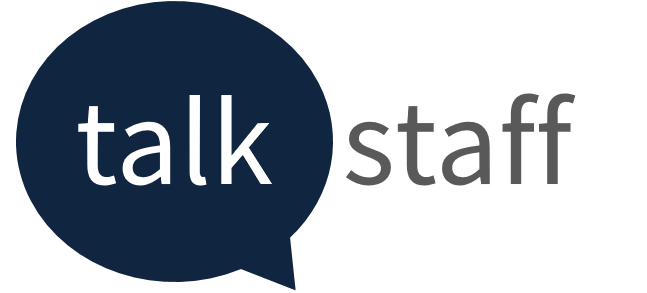
What does the ‘payrolling of benefits’ mean?
Companies now have a new way to report benefits and expenses to HMRC through (PBiK), otherwise known as payrolling benefits.
Historically, companies have had to declare benefits via a P11D form. Every year there is a P11D deadline that companies must hit which adds to payroll admin for companies either in-house or through their payroll services provider. You can explore more P11D facts here.
Looking to Switch Providers? Read about our Payroll Switch Guarantee.
Expected Mandatory Changes to Payrolling of Benefits April 2026
HMRC published a tax simplification update confirming that the payrolling of benefits is likely to become mandatory from April 2026. This will include the reporting and paying of Income Tax and Class 1A National Insurance Contributions (NICs) on Benefits in Kind via payroll software.
Currently, employees can payroll all benefits with a couple of exceptions:
- Living Accommodation (Employee Provided)
- Low interest and interest free (beneficial) loans
These upcoming changes are meant to simplify process, mitigating the 1.1 million claims for tax relief which are received by HMRC each year. This also allows HMRC to automatically process claims too, and it is expected to impact up to 4 million people annually.
The government is designing a new online service that will allow employees to claim tax relief all in one place, for their expenses, which means they’ll receive tax relief sooner. These details will be announced by HMRC later in the year.


How do you make the switch to payrolling benefits?
There are a few steps you need to take to make the switch to payrolling Benefits in Kind as an alternative to P11D forms, and before the mandatory deadline in April 2026, which may move closer.
You can start doing this now, if you decide this is right for your company, there is no need to wait till 2026. However you must register by the start of the tax year that you want to report on and for the whole company.
IMPORTANT: But first, check that your payroll software or the one your outsourced payroll provider uses can process the payrolling of benefits.
1. Register your company – It’s important to note that you must register with HMRC for the payrolling benefits service to make this change and critically this must be done by the start of the tax year that you want to report on. This can be done via the HMRC website using the ‘payrolling employees taxable benefits and expenses online service.’
During the registration process you must tell HMRC which benefits you want to payroll (see step 2)
2. Identifying eligible Benefits in Kind – You’ll want to identify which benefits are eligible for payrolling, we’ll explore how to do this later in this article in our ‘common Benefits In Kind’ section.
3. Calculate the cash equivalent – Once you’ve calculated how much the benefits are worth, add the cash equivalent to your employees’ taxable pay for each pay period whether this is monthly or weekly. You can do this via your usual payroll process either in-house or through your payroll provider (don’t worry, we can help you with this if you’re a payroll client!)
4. Deduct NICs and tax – Next tax and NICs should be deducted via your PAYE system taking due care to use the correct tax codes and calculations are applied.
5. Update relevant payslips – Ensure future payslips show both the taxable benefits your employees have received as well as the tax deductions related to these. Companies who are signed up to payrolling scheme will no longer receive a P11D form (unless they have a benefit exempt from the scheme) but you should still encourage your employees to review their payslips to check the tax deductions remain accurate.
6. Submit PAYE information – You’ll still need to submit PAYE information to HMRC before each regular payday.
7. Submit your P11D(b) form – Although this process usually takes away the admin of P11D forms, in most cases you’ll still need to submit a P11D(b) form which summaries the total Class 1A NICs due on all the benefits you’ve provided. Therefore, even if you’re payrolling benefits you need to keep a record of the benefits you provide to employees throughout the tax year to gather the right information for the P11D(b) form.
Looking for a Quote? We Offer Payroll Bureau Services.


Do I still need to submit a P11D form if I am payrolling benefits to HMRC?
Under most circumstances, you won’t need to submit a P11D form if you register with HMRC before the start of the tax year you want to report on. However, there are some exceptions.
However as mentioned earlier some benefits are exempt from this, therefore if you use ‘employer provided living accommodation’ or ‘interest free/low interest (beneficial) loans’ means you’ll still have submit a P11D. And as mentioned above P11D(b) forms are different and will still be required.
If you choose to payroll company car benefits this also means you don’t need to submit a P46 (Car) form too, unless the car benefit is not being payrolled.
What are the most common Benefits in Kind (BIK)?
Some examples of common Benefits in Kind are company cars, medical or dental insurance, childcare vouchers and Christmas bonuses. Less common includes bikes for employers (which may tie into the companies CSR plans), club membership or meals for employers or directors. The government website holds a useful A-Z list of Benefits in Kind which allows you to check which benefits are taxable.
Many companies use benefits to provide extra incentives or rewards to their team which can help with recruitment as well as employee retention.
What are the pros of moving to payrolling of benefits in the next couple of years?
There are several reasons why some companies are switching to payrolling benefits in kind ahead of the mandatory deadline.
Firstly, the clear reduction in payroll admin which means most companies won’t have to submit P11D and P46 forms each year.
Simpler tax codes free up time for your HR team as employees make less tax related queries and means tax codes for employees should change less frequently.
This helps with accuracy in monthly payrolls as one of the downsides of the P11D system is that it can land employees with an unexpected tax bill later in the year.
This new process minimises year-end forms too.
Things to consider when moving to the payrolling of benefits
Payroll software is a big reason why you might not want to move just yet. The government is ambitious in their goal to move companies to the payrolling of benefits with 2 years even if many welcome the move.
A lot of payroll software simply is not set up to handle the changes so this isn’t something you’ll want to jump headfirst into without checking your options carefully. Liaise with your outsourced payroll provider or inhouse payroll team closely first.
Working with your payroll provider to optimise payrolling benefits
Despite the changes being a great step forward the extra pressure to get this right can add a burden to your team. Therefore, speaking with your payroll provider or switching to an outsourced payroll provider can help you ease the burden at this time.
Please note that the information in this blog was created based on the integrity of reputable links at the time of publishing. These blogs should be used for guidance only, you should always check information further before taking action as sources may update over time. Talk Staff holds no responsibility for implementation or loss
💙 Get a Payroll Provider Who Responds to You 💙
At Talk Staff, we believe in showing appreciation for your employees by ensuring their hard work is rewarded accurately and on time.
With our expert managed payroll and outsourced payroll services, we handle every detail with precision and care, because taking care of your team is the ultimate expression of love in the workplace.
From seamless payroll processing to timely PAYE submissions to HMRC.
Get in touch with our friendly team to discuss payroll today







